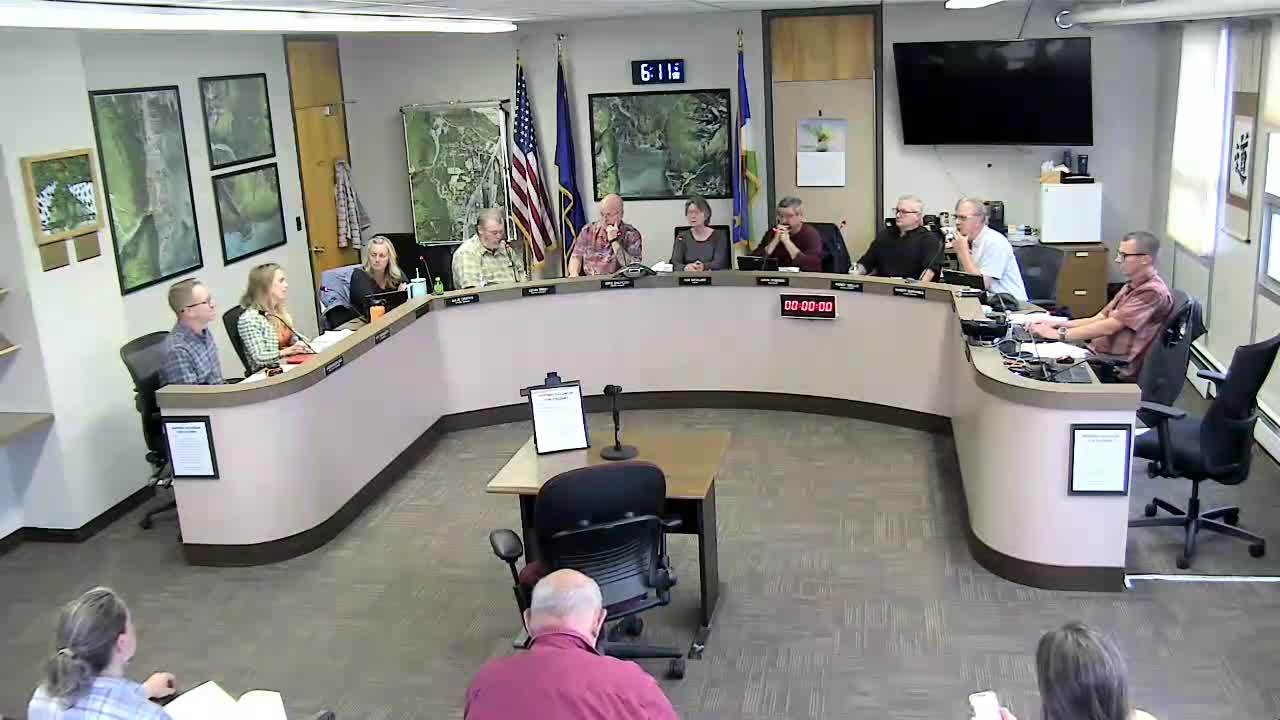City debates fire safety regulations amid water access concerns
August 26, 2024 | Seward, Kenai Peninsula Borough, Alaska
This article was created by AI summarizing key points discussed. AI makes mistakes, so for full details and context, please refer to the video of the full meeting. Please report any errors so we can fix them. Report an error »

During a recent government meeting, officials discussed critical infrastructure requirements for building permits within Seward city limits, particularly focusing on water supply and fire safety measures. The conversation highlighted the necessity of having both water and electricity to obtain a building permit, with specific emphasis on the implications of using water catchment systems.
Fire Chief Jason addressed concerns regarding the absence of fire hydrants in certain areas, emphasizing that without adequate water supply, the city risks losing its favorable Insurance Services Office (ISO) rating, which currently stands at a three. This rating is crucial as it directly influences insurance premiums for residents and businesses. Chief Jason noted that if the ISO were to reassess and determine that the city lacks sufficient fire protection due to homes being built without access to hydrants, the rating could drop, leading to increased insurance costs for residents.
The chief explained that the city’s firefighting capabilities are limited, with current equipment unable to meet the required flow rates for effective fire suppression. He pointed out that the city’s fire engines can only deliver a fraction of the necessary water flow, making it challenging to manage fires effectively, especially in the absence of hydrants.
Council members raised questions about how changes in the ISO rating could affect insurance costs, with Chief Jason clarifying that while the ISO sells evaluation data to insurance companies, the impact on individual premiums can vary widely. He suggested that property owners consult their insurance providers for specific quotes based on potential changes in the ISO rating.
The discussion also touched on the operational challenges faced by volunteer fire departments, particularly in rural areas where access to water sources and infrastructure is limited. Chief Jason highlighted the importance of maintaining hydrants within city limits to ensure adequate fire protection and to avoid reliance on tanker trucks, which may not be feasible in all situations.
Overall, the meeting underscored the critical need for robust infrastructure to support public safety and the potential financial implications for residents if these requirements are not met.
Fire Chief Jason addressed concerns regarding the absence of fire hydrants in certain areas, emphasizing that without adequate water supply, the city risks losing its favorable Insurance Services Office (ISO) rating, which currently stands at a three. This rating is crucial as it directly influences insurance premiums for residents and businesses. Chief Jason noted that if the ISO were to reassess and determine that the city lacks sufficient fire protection due to homes being built without access to hydrants, the rating could drop, leading to increased insurance costs for residents.
The chief explained that the city’s firefighting capabilities are limited, with current equipment unable to meet the required flow rates for effective fire suppression. He pointed out that the city’s fire engines can only deliver a fraction of the necessary water flow, making it challenging to manage fires effectively, especially in the absence of hydrants.
Council members raised questions about how changes in the ISO rating could affect insurance costs, with Chief Jason clarifying that while the ISO sells evaluation data to insurance companies, the impact on individual premiums can vary widely. He suggested that property owners consult their insurance providers for specific quotes based on potential changes in the ISO rating.
The discussion also touched on the operational challenges faced by volunteer fire departments, particularly in rural areas where access to water sources and infrastructure is limited. Chief Jason highlighted the importance of maintaining hydrants within city limits to ensure adequate fire protection and to avoid reliance on tanker trucks, which may not be feasible in all situations.
Overall, the meeting underscored the critical need for robust infrastructure to support public safety and the potential financial implications for residents if these requirements are not met.
View full meeting
This article is based on a recent meeting—watch the full video and explore the complete transcript for deeper insights into the discussion.
View full meeting
